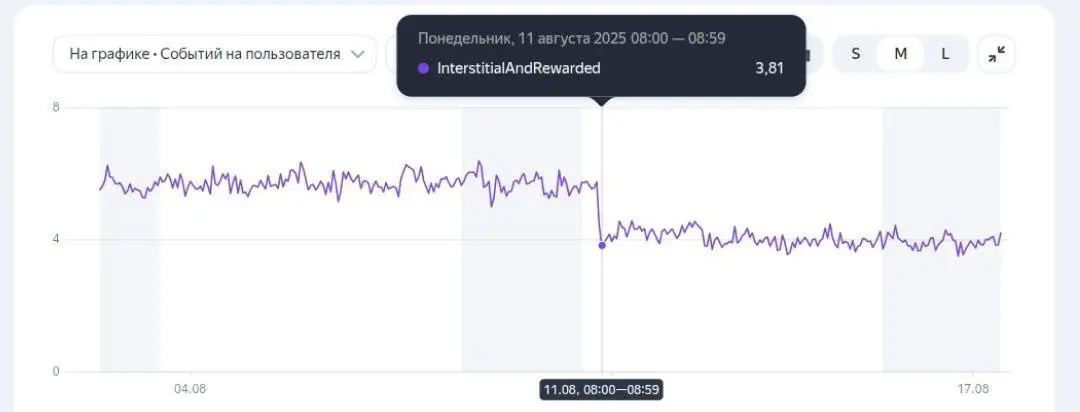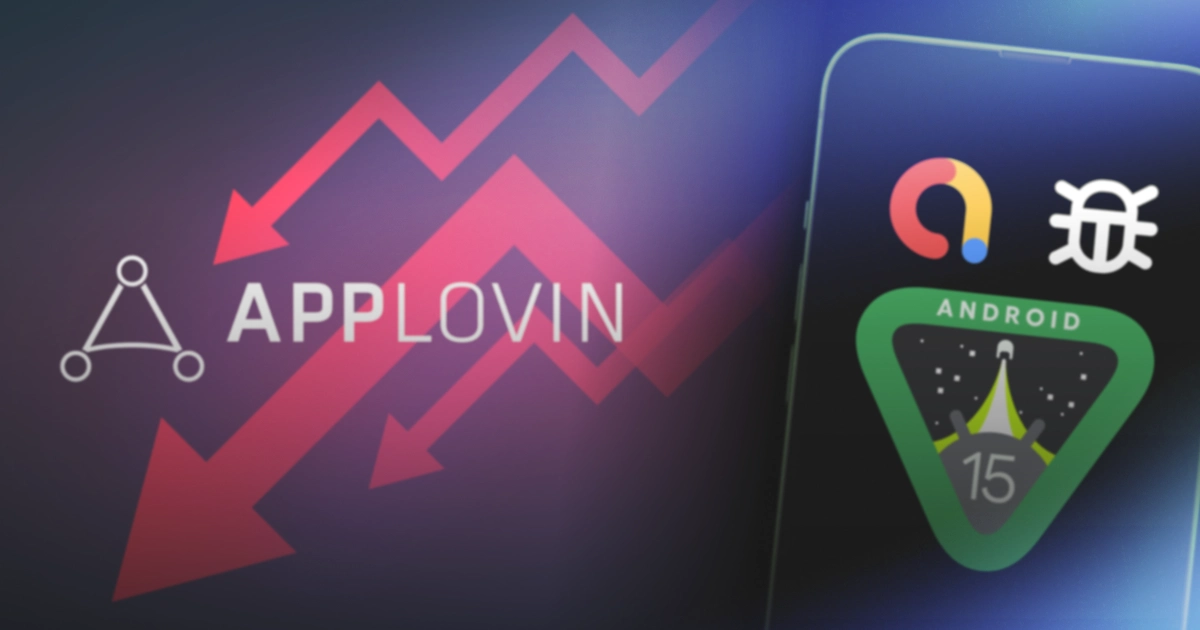August–September 2025 was a stress test for mobile developers. Across the industry, core monetization metrics dropped unexpectedly—especially retention and impressions per daily active user (imp/DAU).
Two overlapping triggers made the situation worse:
-
Google’s API 35 deadline (required by September 1).
-
An AdMob SDK issue on Android 15+: the close (“X”) button on interstitials was rendered outside the ad’s visible area, effectively turning interstitials into non-skippable ads.
At first glance, these looked like sufficient explanations for the sharp decline. A deeper investigation showed the picture was more complex.
The AdMob SDK Issue
Yes, the bug was real and it harmed user experience. Any interstitial effectively became non-skippable, which irritated players and risked churn.
Why this is critical: users can’t close the ad → frustration grows → churn increases → your app’s value erodes.
At CAS.ai, the issue was mitigated starting with SDK version 4.2.1. However, our data indicated that AdMob alone did not explain the imp/DAU drop in early August.
The imp/DAU Slide We Observed
On a partner’s chart we saw a sharp decline on August 11. Initially it could be dismissed as noise, but metrics did not rebound after several days—pointing to a systemic problem.
We ruled out internal causes: AB tests, ad timing changes, mediation tests, or new network integrations. The root cause lay elsewhere.
Revenue Mix: What Changed Across Networks
Classic mediation typically leans on a “top ten” set of networks: AdMob, AppLovin, DT Exchange, Google Ad Manager, ironSource, Meta, Mintegral, Pangle, Unity Ads, Vungle/Liftoff.
In August we saw declines across most networks—except AppLovin. On partner data, the top line (AppLovin) held steady while others dropped. That was our signal: a material change occurred in AppLovin’s delivery logic.

What Did AppLovin Change?
After reviewing creatives and flows, we found AppLovin modified its ad experience, notably for interstitials:
Before: ~5s video + 3s end card.
Now: 7s + 5s + 3s = minimum ~15s.
The key shift: the Skip button is replaced by a Google Play action that takes users directly to the store (instead of to the end card).
This boosts AppLovin’s own performance but disrupts the familiar user journey and alters cross-network balance within mediation.
Market-Level Effects We’re Seeing
-
Longer ad interaction time.
-
Higher conversion to store.
-
Performance pressure on other networks.
-
Developer-side impact: retention declines, imp/DAU drops, and revenue share shifts toward AppLovin.
What Developers Can Do Now
Option 1 — Negotiate with AppLovin
Ask to restore the previous flow or enable lighter settings.
If negotiations fail:
Option 2 — Temporarily remove AppLovin from mediation
-
In ironSource and AdMob: disable manually.
-
In CAS.ai: contact support to switch it off quickly and cleanly.
Option 3 — Change your mediator
If your current setup doesn’t let you control flow and policies with sufficient granularity, consider a mediator that does.
Takeaways
August–September 2025 exposed how fragile the monetization stack can be.
-
Google introduced chaos with an AdMob SDK bug on Android 15+.
-
AppLovin changed its delivery format, rebalancing outcomes across networks.
Developers should respond proactively:
-
Tune your mediation,
-
Open a dialogue with networks,
-
Test alternatives and document impact.
At CAS.ai, our goal is to help the community surface issues early, share fixes, and keep your revenue stable. If you need a hand reproducing, measuring, or mitigating the patterns described above, we’re here to help.
![]()

